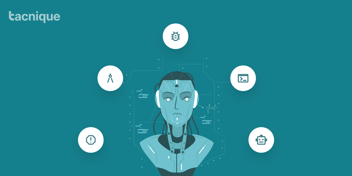
Diversity Hiring Benefits: Building an Inclusive Startup Team
As our world becomes more connected, diversity is becoming increasingly valuable. Research has shown that startups that prioritize diversity in their hiring practices are more successful than those that don't. A diverse workforce can bring various perspectives, experiences, and ideas to the table, fueling innovation, creativity, and growth. In other words, diversity hiring is not just a nice perk; it's essential for startups that want to thrive in today's global and competitive marketplace.
The impact on Creativity, Innovation, and Problem-solving
In a rapidly changing business environment, startups must be creative and innovative to stay ahead of the curve. Diversity hiring can be a powerful tool for unlocking creativity, innovation, and problem-solving; maximizing startup hiring efforts with various perspectives, experiences, and backgrounds that can fuel progress.
According to Silicon Valley Bank, only 26% of startups are making deliberate efforts to improve diversity among their leadership teams.
1. Creativity:
A diverse team can bring a rich tapestry of experiences, insights, and cultures, sparking innovation and creativity. By embracing diversity, startups can cultivate a dynamic, inclusive environment that encourages risk-taking, experimentation, and unconventional thinking. By welcoming diversity, startups can foster a culture of continuous improvement and progress.
2. Innovation:
Innovation thrives in diverse environments where individuals are encouraged to bring unique perspectives. A diverse team can bring fresh ideas and approaches to unlock new markets, disrupt existing industries, and solve complex problems. By embracing diversity, startups can access a broader talent pool, tap into new customer bases, and leverage emerging trends and technologies to stay ahead of the competition and unlock top tech candidates for the organization.
3. Problem-solving:
With a diverse team, startups can easily tackle complex challenges. Different viewpoints and experiences can enable team members to approach problems from different angles, leveraging various skills, perspectives, and insights to develop innovative solutions. By embracing diversity, startups can enhance their problem-solving capabilities and become more resilient and adaptable in changing market conditions.
Evidence that Shows the Benefits of Diversity
Gartner survey reveals that only 12% of hr leaders believe their organization has effectively increased diversity representation. Based on a survey of 113 HR leaders in April 2020, Gartner said there are three organizational barriers to advancing underrepresented talent: Unclear career paths and steps to advancement, too little exposure to senior leaders, and a lack of mentors or mentors or career support.
Research shows that there is a direct correlation between high-skilled immigration and an increase in the level of innovation and economic performance in cities and regions.
Challenges to Diversity Hiring
While diversity hiring can bring numerous benefits, there are significant challenges to creating a more inclusive team that usually has substantial challenges. Startups should invest in hiring platforms that could bring in top candidates with the help of AI. It helps overcome these obstacles and requires a commitment to change and a willingness to take action.
1. Unconscious Hiring Bias:
One of the biggest challenges to diversity-based recruiting is hiring bias, which can exclude specific candidates based on their gender, race, age, or other characteristics. Overcoming unconscious bias requires a conscious effort to recognize and address these biases, including training programs, self-reflection, and diversity and inclusion initiatives that encourage open and honest dialogue.
2. Limited Access to Diverse Talent:
Another challenge to diversity hiring is limited access to diverse talent. This may be due to a lack of diversity in specific industries or a need for more awareness about various job candidates. To address this challenge, startups can expand their recruiting efforts to reach a broader range of candidates, including building relationships with diverse professional organizations, hosting job fairs, and implementing targeted social media campaigns.
3. Resistance to Change:
Change can be challenging, and some team members may resist diversity initiatives. This may be a fear of the unknown, a perceived threat to the status quo, or a lack of understanding about the benefits of diversity. Overcoming this challenge requires a commitment to education, communication, and transparency, clearly articulating the rationale behind diversity initiatives and their benefits to the team and the business.
Learn: How to attract Gen Z workforce for your startup business.
How to Build a More Inclusive Team: A Guide to Recruiting, Video Interviewing, and Onboarding Diverse Candidates
Building a more inclusive team requires a concerted effort to overcome barriers to diversity and cultivate a culture of inclusivity. By following these steps, startups can create a more diverse and dynamic team that brings a range of perspectives, experiences, and backgrounds to the table.
Step 1: Develop a Diversity Plan
Start by developing a diversity plan that outlines the goals, objectives, and strategies for building a more inclusive team. This plan should include the company's specific actions to attract, recruit, interview, and onboard diverse candidates and metrics to track progress.
Step 2: Expand Recruiting Efforts
To attract a more diverse pool of candidates, startups should expand their recruiting efforts to reach a broader range of candidates. This may include building relationships with diverse professional organizations, hosting job fairs, and implementing targeted social media campaigns.
Step 3: Eliminate Bias in Job Descriptions
To ensure that job descriptions are inclusive and welcoming to all candidates, startups should eliminate discriminatory language and focus on the essential skills and qualifications required for the job.
Step 4: Implement Bias-Free Interviewing
To avoid unconscious bias in hiring, startups should implement bias-free interviewing techniques, such as structured video interviews, blind resume reviews, and diverse interview panels.
Step 5: Provide Diversity and Inclusion Training
To foster a culture of inclusivity, startups should provide diversity and inclusion training for all team members. This training should focus on understanding unconscious bias, communicating effectively with diverse team members, and creating an inclusive work environment.
Step 6: Onboard New Hires Effectively
To ensure that new hires feel welcome and included, startups should implement an effective onboarding process that provides an orientation to the company culture, introductions to team members, and a clear understanding of job expectations.
Step 7: Foster a Culture of Inclusivity
Finally, to build a more inclusive team, startups should foster a culture of inclusivity that celebrates diversity and encourages open and honest communication. This can include diversity and inclusion initiatives, team-building activities, and regular opportunities for feedback and discussion.
Also Read-
The Future of Tech Hiring | Tacnique's Virtual Interview Platform
Say Goodbye To Time-Consuming Interviews: Advantages Of Interview As A Service
Case Studies and Examples: Real-World Success Stories of Building More Inclusive Teams
Many startups have successfully implemented diversity hiring practices and built more inclusive teams. Here are a few real-world examples and their experiences:
Example 1: Slack
Slack, the famous team communication platform, has been recognized for its commitment to diversity and inclusion. Slack implemented various diversity initiatives to build a more inclusive team, including unconscious bias training, diversity and inclusion committees, and transparency around hiring metrics.
As a result of these efforts, Slack increased its percentage of underrepresented minorities and women in technical and leadership roles. They've seen benefits from this approach, such as enhanced innovation, improved creativity, and stronger customer relationships.
Example 2: Asana
Asana, a project management software company, has prioritized diversity and inclusion. To attract and retain diverse talent, Asana implemented various policies, such as offering parental leave to all employees, creating employee resource groups, and providing ongoing diversity and inclusion training.
These efforts have made a more diverse and inclusive team where employees feel valued and empowered. Asana has seen benefits such as increased employee satisfaction, better decision-making, and improved performance.
Example 3: Gusto
Gusto, a payroll and benefits software company, has made diversity and inclusion a core part of its culture. To build a more inclusive team, Gusto implemented various initiatives, such as offering unconscious bias training, creating an employee diversity and inclusion council, and hosting company-wide discussions around diversity and inclusion.
These efforts have resulted in a more diverse team where employees feel valued and supported. Gusto has seen benefits such as higher employee engagement, improved customer satisfaction, and better business outcomes.
Conclusion: Prioritizing Diversity and Inclusion for Startup Success
In conclusion, diversity hiring is crucial for startups looking to build more inclusive teams and drive progress and success. By creating a diverse and inclusive team, startups can benefit from enhanced creativity, innovation, problem-solving, and customer relationships while also attracting and retaining top talent.
The key takeaways for building a more inclusive team are recruiting and hiring diverse candidates, providing ongoing diversity and inclusion training, and creating a company culture that values and supports diversity. Startups can also benefit from implementing initiatives such as unconscious bias training, diversity and inclusion committees, and employee resource groups.
Startups must prioritize diversity and inclusion in their hiring practices and offer support and resources. This includes training and resources for hiring managers, creating diversity and inclusion committees, and offering mentorship and networking opportunities for underrepresented groups.



